
Please Share your Email if you Wish to Receive the Golden Tips & Tales Newsletter from History of Ceylon Tea Website
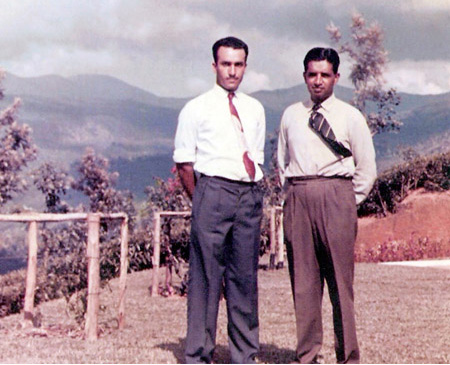
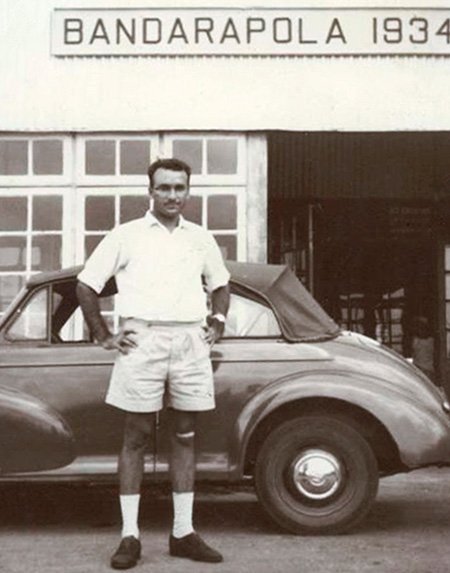
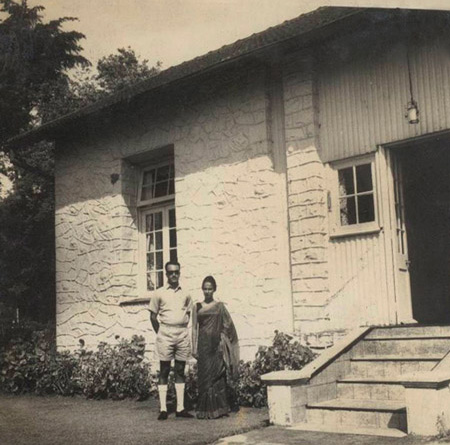
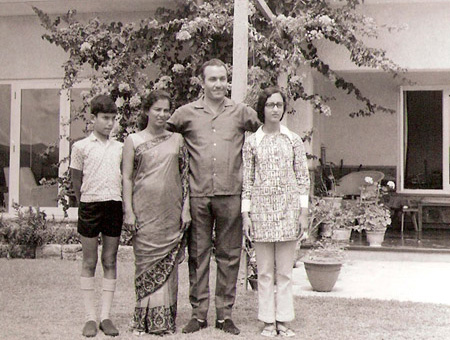
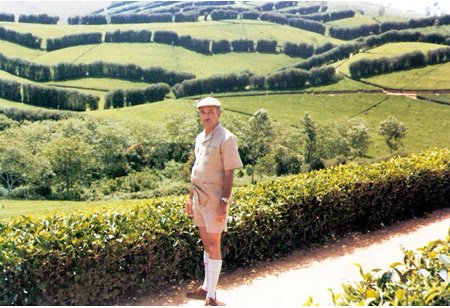
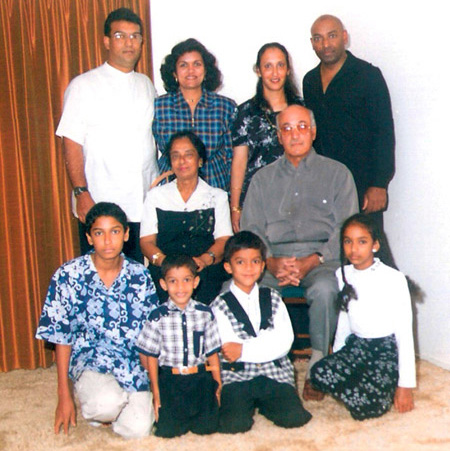
The documentary on the late Vivian Louis Blazé which was sent in to the History of Ceylon Tea website has inspired me to write about my father, Ralph de Run, who was a contemporary of Vivian Blazé and planted in the Uva District on Cobo Estate, Badulla and Dammeria Group, Passara when Vivian Blazé was on Sarnia Estate in Badulla.
Ralph de Run was born on Biyagama Estate (Coconut) in the district of Pannipitiya on the 12th of April 1933. He was the sixth son of nine brothers, and the ninth in a family of fourteen children. His father was a coconut planter who later changed his vocation to planting in Rubber and Tea in the latter years on Arslena Estate in Norton Bridge.
Having received his primary education at Dharmapala Vidyalaya in Pannipitiya, he completed his education at St. Anthonys’ College in Katugastota, Kandy, in 1950. Here he excelled in Cadetting and received the rank of Regimental Sergeant Major for the 2nd Battalion of Kandy District. His first love was for the armed forces and on being selected for training at Sandhurst in England, his mother refused to sign approval for him to pursue his chosen career as parental approval was a pre-requisite for selection.
At this juncture in his life, he was left to make a decision and moved into the profession of tea planting. And fifty years hence, I am sure he looks back on a sound and true decision when you read about his achievements in this missive. He learnt his work with his older brother Gerald and received his first appointment under Robert Harley Snr. on Tamara Valley Estate in Dolosbage in 1954. Discipline was the only pre-requisite to being a practical tea planter and Robert Harley ensured that his SD fell in line. After a hard long day in the tea fields supervising plucking and sundry work, the evenings were spent on the front verandah of the Superintendents Bungalow reviewing the day’s events over a glass of Schweppes Ginger Beer.
Riding to Kandy on his Triumph Tiger 100 to meet up with his fiancée (now his wife of 52 years), was a rare and much cherished privilege but not reporting back on a Sunday evening on time would result in confiscation of the motorcycle. He left Tamara Valley in the latter part of 1954 and took up an appointment as Assistant Superintendent of Hatherleigh Estate (J.M. Robertson & Co.) in the Rakwana District. He left Hatherleigh in 1955 and spent a few years away from planting, and then received his first company appointment in June 1959, as the Assistant Superintendent on Fernlands Estate in Punduloya (managed by Whitehall Bousteads). I was born in February 1959 and Fernlands was my first plantation home (Kaipoogala Division bungalow).
It is noteworthy that his brother Norman de Run and Norman’s son Elvis de Run subsequently served as Assistant Superintendents on Fernlands. I recollect from conversations that this was some of the happiest times of our lives; our small family comprising my older sister Priyanthi (now domiciled in Melbourne) and me. Whilst working for an officer and a gentleman under Col. Vernon Ratwatte, his wife would ensure that the family felt very much at home. His circle of friends was the late Rajah Adhihetty (popularly known as Daba) who was his neighbour on Pine Hill, Bob Smith (Choisy), Derek Wickramasinghe (Sheen) and Madha Madhvan, a proprietary tea planter in Punduloya.
After a hard week’s work, it was compulsory that the tea planting community met at the local planters’ club for a game of tennis and a well-deserved beer. In the days gone by, you had to earn the respect of the workers and Ralph passed the test with flying colours when a ‘Thalava’ or head of the union threw out a challenge that Ralph was not competent in the practice of pruning of tea fields, and hence would not comply with the tasked work thereby refuting management instructions. The individual was challenged to a competition of who could prune better, a task which Ralph convinced his challenger beyond a reasonable doubt.
In the year 1961, Ralph was sent on transfer to Bandarapola Group in the Matale District, a property which had multiple crops of tea, rubber and cocoa. He served under Sandy McKenzie and during his period at Bandarapola, acted for Sandy Mc Kenzie when away in England on furlough.
In the year 1964, he achieved a promotion and was transferred as Superintendent in charge of Cobo Estate in Badulla (Uva District) under the managing agency of Whitehall Bousteads. I would be accurate in stating that Ralph was always a Whitehall's planter and continued until the 'take-over' by the state sector in 1972. The years on Cobo were uneventful except for the sad event of the tragic and untimely demise of his younger brother (Fredrick de Run) who was shot by the bungalow cook in 1967 on El Teb Group, Passara whilst serving as the Assistant Superintendent. In the year 1967, he was transferred to Dammeria Group in Passara District (owned by Estates Company of Uva Ceylon Ltd and managed by Whitehall Bousteads). During his period of service on Dammeria, the management of Yelverton Estate in Hali-Ela was amalgamated with Dammeria, with the Senior Assistant Superintendent of Dammeria (Ajith Ratwatte) located as the SD in charge on Yelverton (Ajith is the son of the late Col. Vernon Ratwatte and is currently the Chief Executive Officer of a Plantation Company).
With the outbreak of the first insurgency in 1970, the family had to undergo a traumatic time as Mahatenne Division of Dammeria was on the border of the Moneragala District, and the first insurgent attacks took place in Wellawaya. There was evidence that an attack was planned on the Passara Police Station (which was on one boundary of the estate which overlooked the Passara town). Almost all the planters in the district rallied around the Police Station to help protect against probable attack by the insurgents. No attack took place for obvious reasons.
Ralph, in addition to the responsibilities of managing two tea properties for Whitehall, served as the District Chairman of the Planters Association as well as President of the renowned and popular Passara Gun Club. Annually, the Gun Club had its tennis meet and dance and additional competitions of clay pigeon shooting and .22 target shooting. Douglas Jenkins of Shawlands Estate in Lunugala always carried away the awards for the shooting. Traditionally, the weekly club day was on a Wednesday and planters from all around patronized the club for tennis and a sumptuous ‘high tea‘. The local cinema hall always supported the club day with an English film to successfully end the day.
Holidays on the east coast were a tradition as featured by Vicky Vandendriesen in her article (memories are made of this). Names such as Hulange or East Wind (owned by Vivian Blazé), Keelikudah Bungalow (owned by Dennis Ratwatte, Crab Claws (owned by Anton Lawrence, Chenakudawadi (owned by Hema Kotagama) were well patronized by the planters who drove down in the Land Rovers and Morris Station Wagons, loaded with family and food.
In September of 1969, Whitehall Bousteads were looking out for a suitable candidate amongst the planters, to take up appointment on two of the prime properties managed by them, High Forest in the Maturata District (to succeed Col. Vernon Ratwatte who was on the eve of retirement) and Laxapana in the Maskeliya District (to succeed Freddie Krelshiem who was migrating to Australia). Ralph applied for the vacancy on High Forest but was advised by Alain Sharphauld (Director of Whitehall to accept the management of Laxapana which was a sterling company owned property of India & Ceylon Tea Planters).
Ralph accepted this very challenging appointment in 1971 and served as the Superintendent until July 1980 – a long nine years. In his first year on Laxapana, the estate achieved a record price at the London Auctions and continued to be exceptionally managed through the transitional period of change from the private sector to state-owned management. At this second junction in his career, he had to decide on leaving for Australia with the family, which his older brother Malcolm decided while planting on Balangoda Group (Whitehall) or stay on with the many changes which were to be expected. Ralph decided to stay and the period of transition was difficult as many were misguided by the fact that planting was a luxurious lifestyle and did not understand the hazards and isolation in which tea planters had to work and control the large populations of estate workers.
Ralph was always an individual who looked for better standards all round which included uplifting the living conditions of the estate worker. He embarked on a path of introducing a ‘Cottage System’ of quarters for the estate and a few models were constructed on Laxapana, thereby moving away from the 'Line Room' system. The World Bank had made note of the development work on Laxapana and with the commencement of the World Bank Investment Program, Laxapana was identified as the model project in 1977, for construction of more cottages for the workers. During this period, the management was in the hands of the Sri Lanka State Plantations Corporation and Laxapana State Plantation continued to prosper under the supervision of Ralph and his competent Assistant Superintendents.
Hamilton Division of Laxapana was always referred to as ‘My Gold Mine’ with its eye-catching carpet of VP tea. Whilst Laxapana was always a property of very high agricultural quality, Ralph used to enjoy walking around Hamilton in particular even on a day off to enjoy the fulfilment and satisfaction it gave him.
In the year 1980, Ralph was transferred as superintendent of Aislaby State Plantation in the famous Malwatte Valley in the Uva District. Hence, after a period of nine years, he was back in Uva and served as the superintendent for a period of three years during which period the Aislaby mark continued to sell amongst the Top Sellers at the Colombo Tea Auctions, particularly during the Uva Quality Season. Practical Tea Planters have their own ways of identifying the first signs of the famous Uva Quality Season. Ralph stood on the bungalow lawn early in the morning and inhaled the fragrance of the fired tea emanating from the factory below and would positively identify the setting in of early seasonal quality.
My parents were acutely aware of the social imbalance which unfortunately is very evident in our country and committed themselves to building up a community of peace by inaugurating the Sri Lanka/Japan Peace Pagoda which today, commandeers a site overlooking the Tea Fields of Kirchyan and Kurukudde on the East and the three peaks of Hakgalla and the Sleeping Warrior range, due west.
In the year 1983, Ralph was appointed as the Resident Director for the Regional Board II (Nuwara Eliya/Haputale Region) and was in charge of the administration of the following plantations. Aislaby, Chelsea, Gonomatava, Craig, Nayabedde, Ampittiakande, Mahakanda Uva, Poonagalla (Bandarawela District) Kahagalla, Haputale, Wiharagalla, Koslanda Pitarathmalie, Dambatenne (Haputale District) and Rassagalla, Meddakande, Denegama, Balangoda Group, Cecilton (previously referred to as Balangoda East), Walaboda, Rye/Keppoch and Wikiliya, all in the Balangoda District. In the year 1984, the plantations in the Balangoda Region were administered by the SLSPC Board V office of Ratnapura and Craig, Poonagalla, Nayabedde, Mahakanda and Ampitiakanda by the Nuwara Eliya Office.
From a practical tea planter to the role of an administrator would have been challenging, but Ralph enjoyed the day to day brainstorming sessions with his team of superintendents who reacted positively to his guidance. Events turned towards a traumatic time when the second insurgency uprising commenced in 1988 and many superintendents lost their lives whilst on duty on their plantations and left him with the depressing task of informing families of the loss of their loved ones.
He survived these depressing times with the moral support of my mother who never left his side through good times and bad and finally stepped down from the position of Resident Director in the latter part of 1989, thereby reverting to the post of Superintendent on Dambatenne Estate. This posting was for a short period of six months and he was once again appointed as the Cluster Director for Haputale District and had to take up his assignment on Haputale State Plantation (previously Haputale Group under Scottish Tea and Lands). With the subsiding of the insurgency in the year 1990, Ralph finally retired at the age of 57 and for a period of one year, headhunted a foliage project in Marawila.
At the age of 58, in 1991, he finally decided to migrate to Australia with my mother, joining my sister and her family in North Queensland. He, however, returned to the island in 1993 and took up appointment as Superintendent of Carolina Estate in Watawela (managed by Watawela Plantations Ltd) for a period of three years, serving as the most senior superintendent in Sri Lanka and finally called it a day at the age of 63 – a very fulfilling innings. Having served in the tea industry myself for 19 years, a very amusing incident was when I heard my father referred to as ‘The Ghost Planter of Watawela’ by Kamal Dabare (a senior tea planter now retired) who happened to witness him in a tea field on Carolina along with his ‘Kangani’ BEFORE THE SUN WAS UP.
Having weathered many a storm, and witnessed the happy and sad times in a period of over forty years of Walking Through the Tea Fields of Sri Lanka, Ralph and Lakshmi now reside in Melbourne, close to my sister and visits the shores of Sri Lanka frequently.
This memoir will not be complete without a compliment to Lakshmi (my mother), who was a typical plantation wife. Her policy was to “Keep the Kettle Boiling” and will always be remembered for her warm welcome to visitors “family, friends or strangers” who never left her home on an empty stomach.
Comments
(In keeping with the objectives of this website, all COMMENTS must be made in the spirit of contributing to the history of this estate, planter or person i.e. names, dates & anecdotes. Critical evaluations or adverse comments of any sort are not acceptable and will be deleted without notice – read full Comments Policy here)